Here are 10 ways to support healthy weight loss while nourishing your body with delicious, nutrient-dense foods. No fad diets, gimmicks or deprivation!
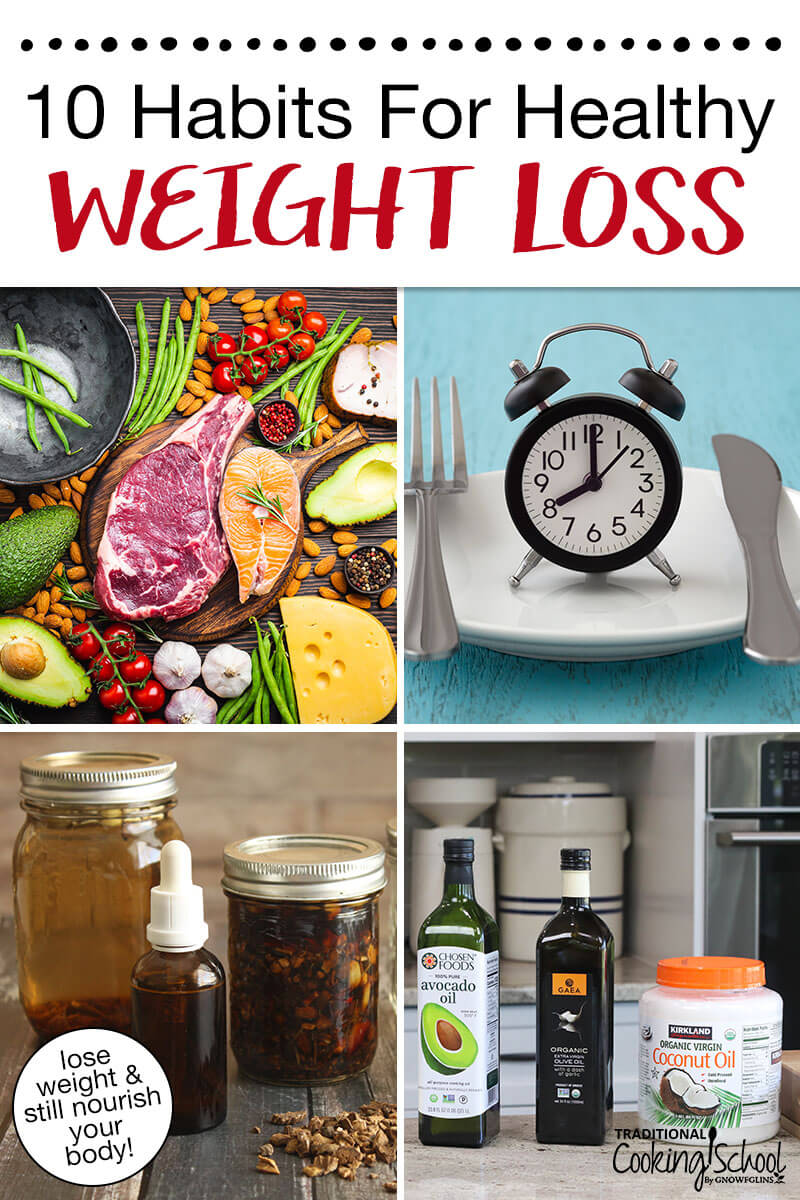
“Strong, not skinny.”
In my adulthood, that’s my mantra! I think it’s an excellent spirit in which to approach healthy weight loss. Our overall goal should be wellness.
That said, sometimes we eat too much. Maybe during the holidays, when over-eating is considered more acceptable. Or, due to hormone imbalances or a diet that isn’t nutrient dense, we don’t feel full and satisfied, so we keep eating beyond the point of moderation.
Perhaps the most common cause of weight gain among Americans? Our caloric intake exceeds our activity level.
So, whether it’s post-holiday weight gain or a goal in the new year to lose unwanted weight, here are ten ways to lose weight and still nourish your body. It’s time to embrace new lifestyle choices and love yourself in the process!
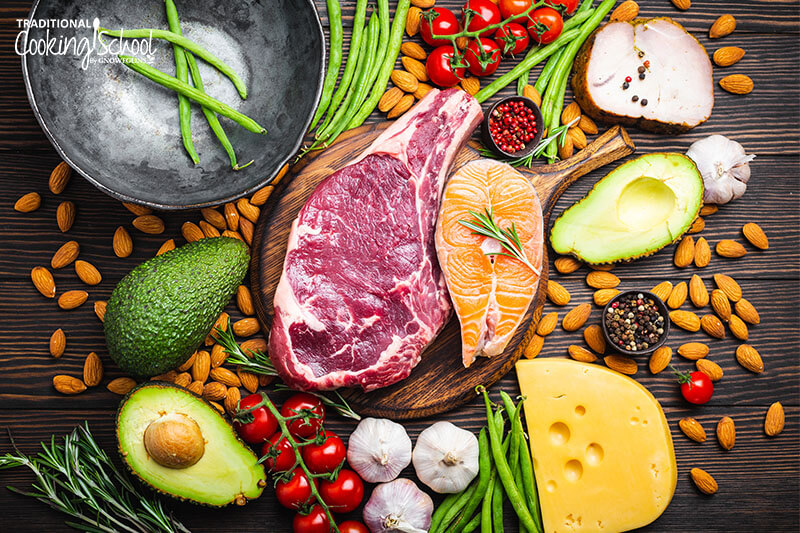
Table Of Contents
1. The Ketogenic Diet
The ketogenic diet, developed in the 1920s to treat epilepsy, puts the body into a “state of ketosis”. In other words, the body burns fat to produce energy instead of burning carbohydrates. Ketosis is created through a diet high in fat, moderate in protein, and low in carbs.
You may be wondering if this has anything to do with the low-carb diet craze associated with the Atkins Diet (created by Dr. Robert C. Atkins)… After all, both diets restrict carbohydrate intake. However, the origins and goals of the diets are noticeably different.
For one, a true ketogenic diet hinges upon the consumption of nutrient-dense, high-quality foods. In this way, it’s complementary to a traditional way of eating (such as the Paleo/primal diet), wherein ingredients and sourcing matter:
- pasture-raised meats from pesticide-free grass rather than factory farmed meats
- nourishing fats like butter, coconut oil, and animal fats instead of vegetable oils
- no soy, legumes, or processed foods
- lots of mineral-rich water and sea salt
In contrast, Atkins promotes processed, convenience foods and doesn’t mention sourcing or purity of meats or other whole foods (source). The goal of the Atkins Diet is solely weight loss. Conversely, a ketogenic diet — especially in the context of a broader Paleo or Traditional diet — is geared toward overall wellness.
The correct ratio for losing weight on a ketogenic diet is 75% fat, 20% protein, and 5% carbohydrates, although many ketogenic proponents do eat a slightly higher ratio of protein and lower ratio of fat. Organs and other pastured meats, seafood, avocados, and green vegetables cooked in plenty of fat are emphasized, and not too many fruits or nuts.
What does this look like in terms of carb intake? About 15 to 30 grams daily is the guideline (source). Sound doable?
When it comes to balancing carb intake with one’s physical activity level, the ketogenic diet provides increased awareness and intentionality (source).
Action step: Learn more about the ketogenic diet and how it can help you lose weight in our Healthy Diets eCourse. Download this helpful chart (or pin it!) to help you understand how to balance carb intake with movement throughout the day, for both healthy weight loss and balanced blood sugar! Need meal ideas? Check out our Keto recipe archives.
A Word of Caution Regarding the Ketogenic Diet for Weight Loss
Most people should not follow the ketogenic diet for extended periods of time.
Our bodies need carbohydrates for energy and proper organ function. Many carbohydrate foods also contain fibers needed by our gut microbiome. While following a ketogenic diet, it’s important to consume prebiotic foods or supplements.
To maintain a healthy weight, the Paleo diet provides high protein, moderate carbohydrates, and moderate fat. Many Paleo health figures advocate for using the ketogenic diet intermittently with a Paleo diet. (source)

2. Exercise With Regular, Gentle Cardio
Even if you skip other tips from this article, this is one tip not to miss!
We tend to be a culture of sitting all day and then giving one stab at exercise at a designated time, only to go and sit some more! We should all strive for more movement in general, which also provides more frequent cardio.
When I lived in London years ago, I couldn’t keep weight on because I walked everywhere — several times throughout the day. Several friends and relatives have used this method for weight loss, including myself in recent years. It’s actually my favorite approach to healthy weight loss, but too little discussed.
The idea is very simple: go on multiple walks each day. These can be brisk but gentle walks. Ideally, they are before or right after a meal, as exercise increases one’s metabolism.
This method is cathartic, meditative, and rejuvenating. Instead of pushing ourselves really hard with intense cardio workouts — which can create an unhealthy psychological game of “working off calories” — we are simply going on one to three gentle walks each day.
I like to pray during my walking times. Often, I unintentionally work through stressful issues in my life so that, by the time my walk is over, I feel better about whatever issue needed calming.
Also, my husband and I go on walks after dinner about 5 nights a week, in most weather, or early on weekend mornings. We find it’s the best way for us to talk, bond, connect, and work through the challenges that life is throwing our way.
Consider adding in a stretching and strengthening program that can be done anywhere, anytime. Get up more often to do these stretches. Alternate your routine with walks.
Action step: Increased intermittent movement is the goal! Try to go on at least one walk, before or after a meal, once a day. Then, increase to a second or third walk each day. Make the time; reap the reward! Smile, enjoy the fresh air on your walks, and don’t forget the importance of proper footwear!
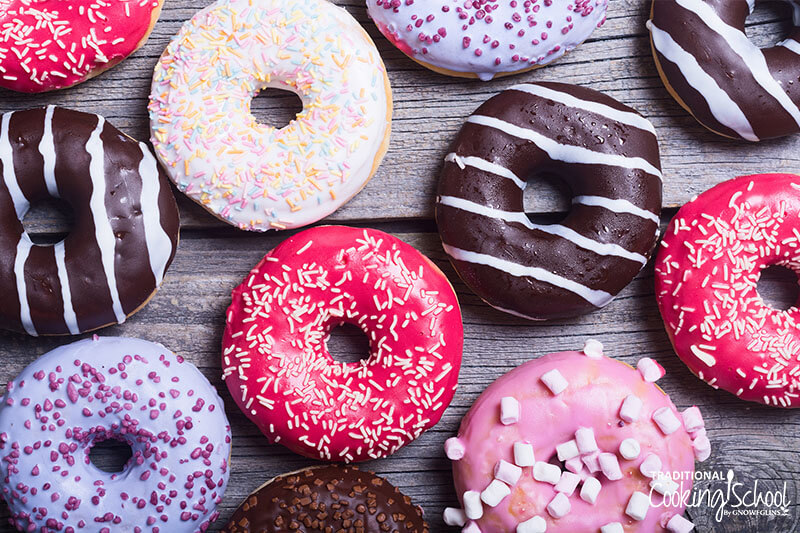
3. Eliminate Sweets
Sweets often fall into one of two categories: simple carbs and/or processed foods. Neither of these foods nourish us or belong in our diets. Simple carbs are sugars that cause an insulin spike, or a burst of energy, followed by an energy crash. In other words, simple carbs digest quickly rather than providing sustained energy (source).
As lovely as sweets taste, they are addictive. It’s hard to eat just a bit because our sweet tooth snowballs. For example, if you’re used to eating dessert after dinner each night, your mind won’t be satisfied without that treat.
Cutting out sweets entirely helps us to feel satiated by savory food. And, of course, no sweets means more balanced blood sugar levels and fewer calories to be stored as fat. Therefore, our bodies are able to burn the fat that’s already there (source)!
The goal? Remove all refined and highly processed carbohydrates from one’s diet, and start craving nutrients — not sweets.
Action step: Choose a day to clean out your fridge, freezer, and pantry. Remove temptation, and don’t allow yourself special baking projects or splurges at the market. Out of sight, eventually out of mind.
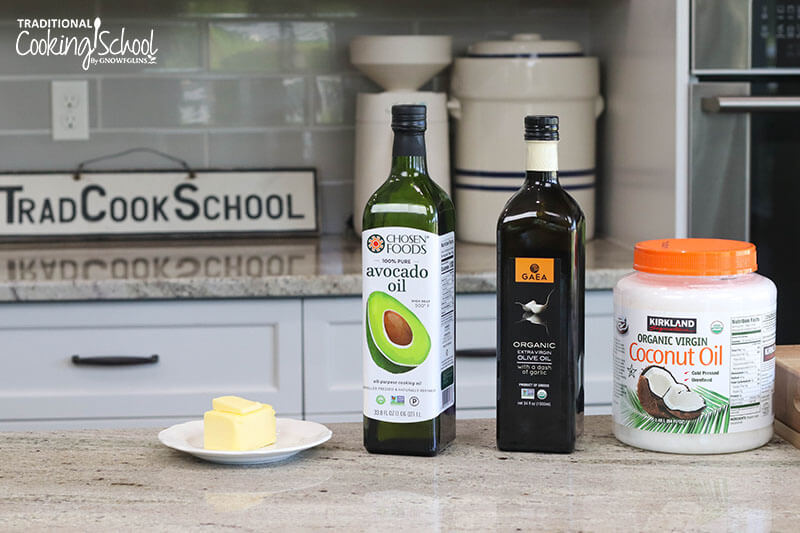
4. Increase Fat Intake
More fat means fewer sugar cravings and feeling more satisfied.
Do you know why that is? Fat digests well, but slowly, as it nourishes our bodies and helps other nutrients (such as fat-soluble vitamins) to absorb properly. We feel satisfied because our bodies are satisfied.
When we overeat, it is often because we are not eating nutrient-dense foods (source). Therefore, the body craves more food because it wants more of the right foods in the right ratio to one another.
By increasing fat intake, we will actually need less food. We will feel full sooner and be more satisfied. In contrast, simple carbohydrates and processed foods do not satisfy and make us want to keep eating (source).
Action step: Remember, eating fat does not make us fat. Eating more calories than the amount of energy we expend, through regular movement and exercise, causes weight gain. Enjoy your food! And use traditional fats like butter, extra virgin olive oil, avocado oil, and ghee in your savory, high-fat, nutrient-dense dishes.
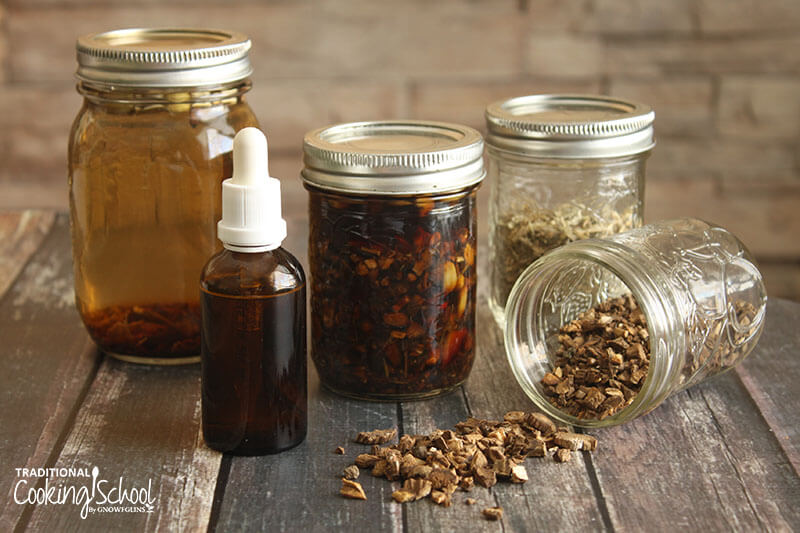
5. Add Digestive Bitters
When we increase fat, we also need to support the systems that digest that fat. Digestive bitters are my favorite supplement!
They adjust the stomach’s pH by triggering the liver to produce bile and detoxify. Bitters also trigger the gallbladder to release bile into the stomach. Then, the bile helps food digest more efficiently through the entire alimentary canal.
Efficient digestion means that our bodies can assimilate nutrition better, thus helping us to feel satisfied. Bitters benefit our overall gut health, too. They are a must, in my opinion.
Action step: Start using digestive bitters with each meal, especially ones that include fat and/or protein. This is my favorite bitters product. It is easy to carry in a purse or keep by the kitchen table for mealtime. Dosage is 4 sprays per meal. You can also make your own digestive bitters!

6. Increase Veggies, Including Complex Carbohydrates
Vegetables are one of the best sources of fiber, and fiber increases satiety during and after meals (source).
Starchy vegetables — like potatoes, sweet potatoes, cassava root, winter squash, parsnips, beets, and carrots — are valuable when it comes to healthy weight loss because they provide complex carbohydrates which yield energy and satiety. Complex carbs are also required for healthy hormone function, muscle growth, and energy levels.
While eating a lot of complex carbohydrates won’t benefit someone who’s trying to lose weight, including a small amount of complex carbs in one or two meals a day can help to satiate and energize.
As mentioned previously, carbohydrate intake should correspond to one’s activity level. Excess carbs are stored as fat since that energy isn’t being used. Thus, carbs have a bad reputation for causing weight gain.
Served alongside protein and not as the main course, one to two servings of carbs daily is enough for most individuals.
So, if you really like carbs and want to eat more of them, plan to build muscle! Muscles burn more calories than fat; and muscles need carbs to exist (source).
Finally, consider adding chlorella to your diet! Studies suggest that chlorella is an asset to overall health as well as weight loss, hormone regulation, and improved metabolism. Chlorella may also help with blood glucose levels and high cholesterol (source).
Action step: Replace sweets with vegetables, especially high-fiber veggies like greens and lettuces, beets, and prebiotic veggies like lightly cooked or raw onions and fermented asparagus. Then, match the amount of high-carb veggies to your activity level. Consider adding chlorella to your diet.
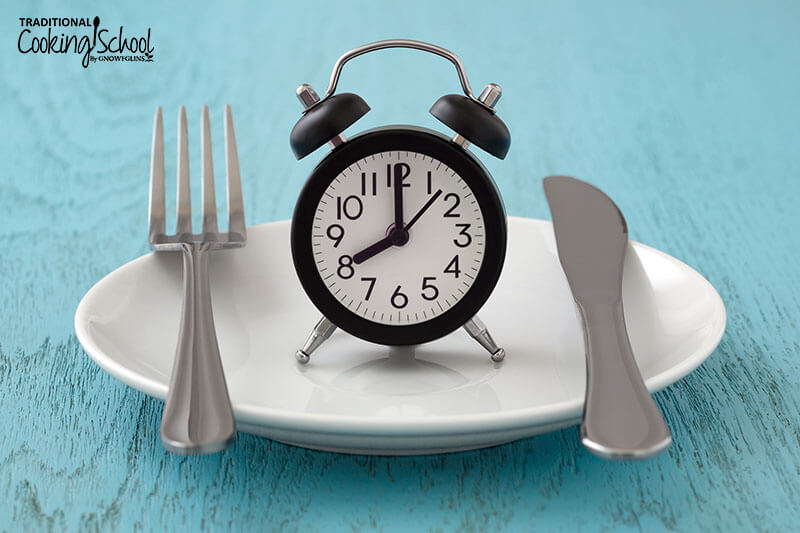
7. Consider Intermittent Fasting
Recently tried and celebrated by Sally Fallon Morell, author of Nourishing Traditions, this method of healthy weight loss is increasing in popularity.
Dr. Tom Cowan, popular author and speaker for the Weston A. Price Foundation, discusses this phenomenon here. Essentially, the body holds onto fat for 12 hours. After 12 hours, the body allows fat to be released. Eating only two meals a day and doing an 18-hour fast allows the body 6 hours in which to mobilize fat and detoxify the liver. By giving the digestive system a break, that same energy can be used to clear out toxins and remove fat cells.
So, in a 24-hour day, this might look like finishing dinner by 6 p.m. and then not having a meal again until lunch the next day. Tom Cowan says he enjoys having an active morning of weight lifting and cardio exercise, thus further enhancing the benefits. (Source.)
Eating just two meals a day doesn’t seem too hard considering most of one’s fasting time is accomplished overnight, during sleep and through a late breakfast (source).
Our family usually waits until 10 a.m. or later to eat our first meal of the day. I learned this approach to breakfast from Dr. Natasha Campbell-McBride in her GAPS Diet manual, Gut and Psychology Syndrome. It allows the body to detoxify for a full 15 hours minimum. If you choose to do this as well, it may serve as a helpful introduction to a fully intermittent fast.
Action step: Learn more about intermittent fasting. Consider intermittent fasting one or two days per week, then work up to more frequent fasting.
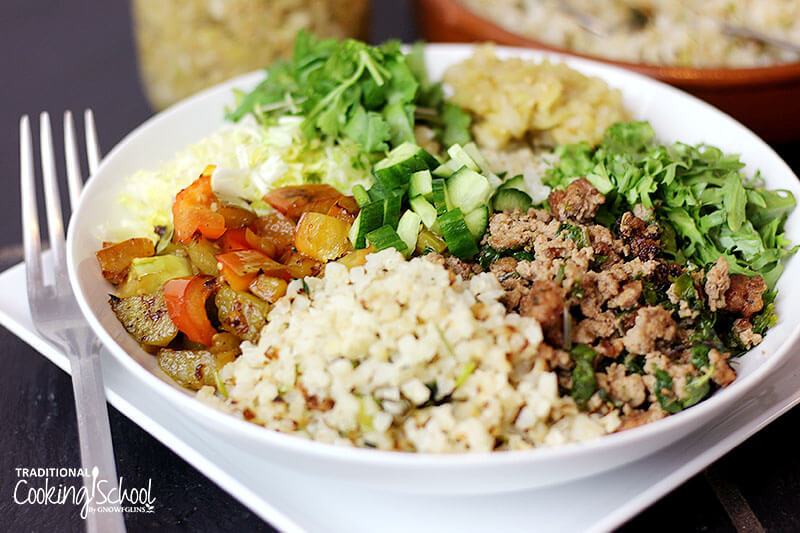
8. Don’t Eat After Dinner
Say no to bad eating habits!
Do you remember the “Freshmen 15” from your college years? I remember all of the girls getting together in each other’s dorm rooms to order pizza at 10 p.m. They ate to celebrate their freedom, to socialize, to release stress, to “party” — but not because they were hungry. It was said that many girls would gain 15 pounds their freshman year of college from this social ritual.
Since this is not ideal, instead we should enjoy a satisfying dinner of vegetables, fat, protein, and complex carbs. Then, call it good until morning! Our bodies detoxify during this time, and we don’t need the added calories or even nourishment of a snack or dessert after dinner.
Action step: Let’s eat for nourishment and pleasure, but not out of habit, boredom, or fun. Replace dessert and after-dinner or bedtime snacks with a short walk or other enjoyable activity.
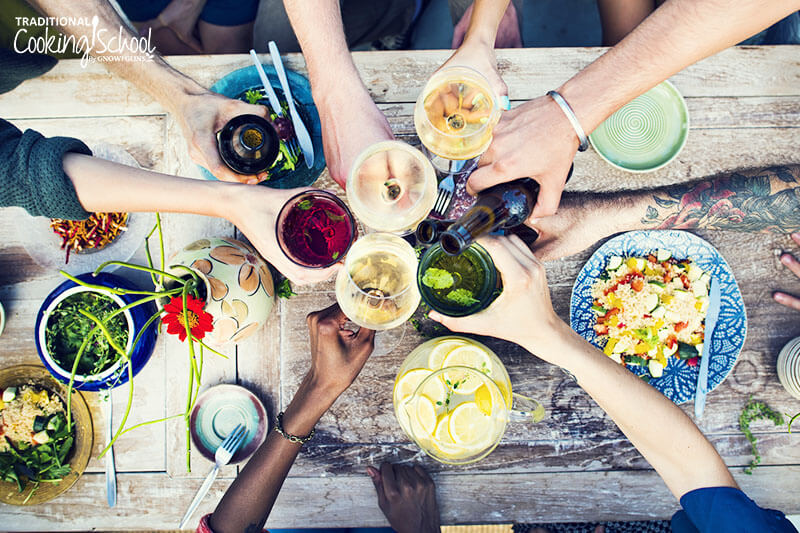
9. Savor Each Bite
Shift your focus to enjoy the pleasure of eating food. This might seem like an ironic tip to someone who wishes to eat less… however, many of us overeat because what we see with our eyes is so intoxicating that we mentally or emotionally want to get in as much as possible, instead of savoring it.
We focus on the quantity of food satisfying us. This is a fallacy and will never fully please or satiate. Ultimately, overeating leaves us feeling sick (and gaining weight).
In contrast, imagine a moderately-portioned meal as a journey for all of the senses. Slow down and appreciate it.
First, see the beauty of your food — even appreciate the feel of the food in your hands if you’ve prepared it.
When it’s time to eat… smile, inhale the aroma, and enjoy the smells. Take that first bite and notice the temperature, feel the textures, taste the nuances, focus on it. Then, remind yourself to chew it for longer than you are apt — 30 chews perhaps — until your food is liquefied, which will help it to digest better (source).
What emotions does the food create in you? Fresh herbs, surprising spices, rich fats, earthy meats, refreshing vegetables — all of your food elicits a response. Take the time to notice it.
Action step: Eat slowly to enjoy the nuances of your food. Chew longer to improve digestion. Savor each bite.

10. Don’t Under-Eat
Just as over-eating causes stress and weight gain, under-eating causes undue stress on the body and deprives the body of needed nutrients.
Eating too little food changes our resting metabolic rate, which absolutely sabotages the whole goal of healthy weight loss and overall wellness. Our resting metabolic rate reflects how many calories are being used by our bodies when we’re at rest.
Now, if over-eating was a struggle before, eating less is definitely part of the whole picture. Certainly, the holidays invite many of us to overeat.
So, sure, we should eat less if we were gorging ourselves or even taking a few extra bites at each meal and not listening to our bodies. We do need to eat moderate portions. Just be careful not limit calories too severely, or the effects are counterproductive. Instead focus on enjoying nutrient-dense foods.
Action step: Listen to your body. Give it what it needs without slipping into the gully of self-deprivation.
11. Bonus Tip!
Social support can increase our success with lifestyle changes (source). Is there someone in your life with whom you can accomplish this goal of weight loss?
Action step: Ask your partner, a friend, or even a coworker to join you on your path to wellness, which happens to include weight loss.
How do you lose weight and still nourish your body? Which of these tips for healthy weight loss do you find most helpful?
This post was originally published and written by Megan Stevens on 1/5/18. It was updated and republished on 1/14/22.
...without giving up the foods you love or spending all day in the kitchen!

2 free books:
Eat God's Way
Ditch the Standard American Diet, get healthier & happier, and save money on groceries...
We only recommend products and services we wholeheartedly endorse. This post may contain special links through which we earn a small commission if you make a purchase (though your price is the same).


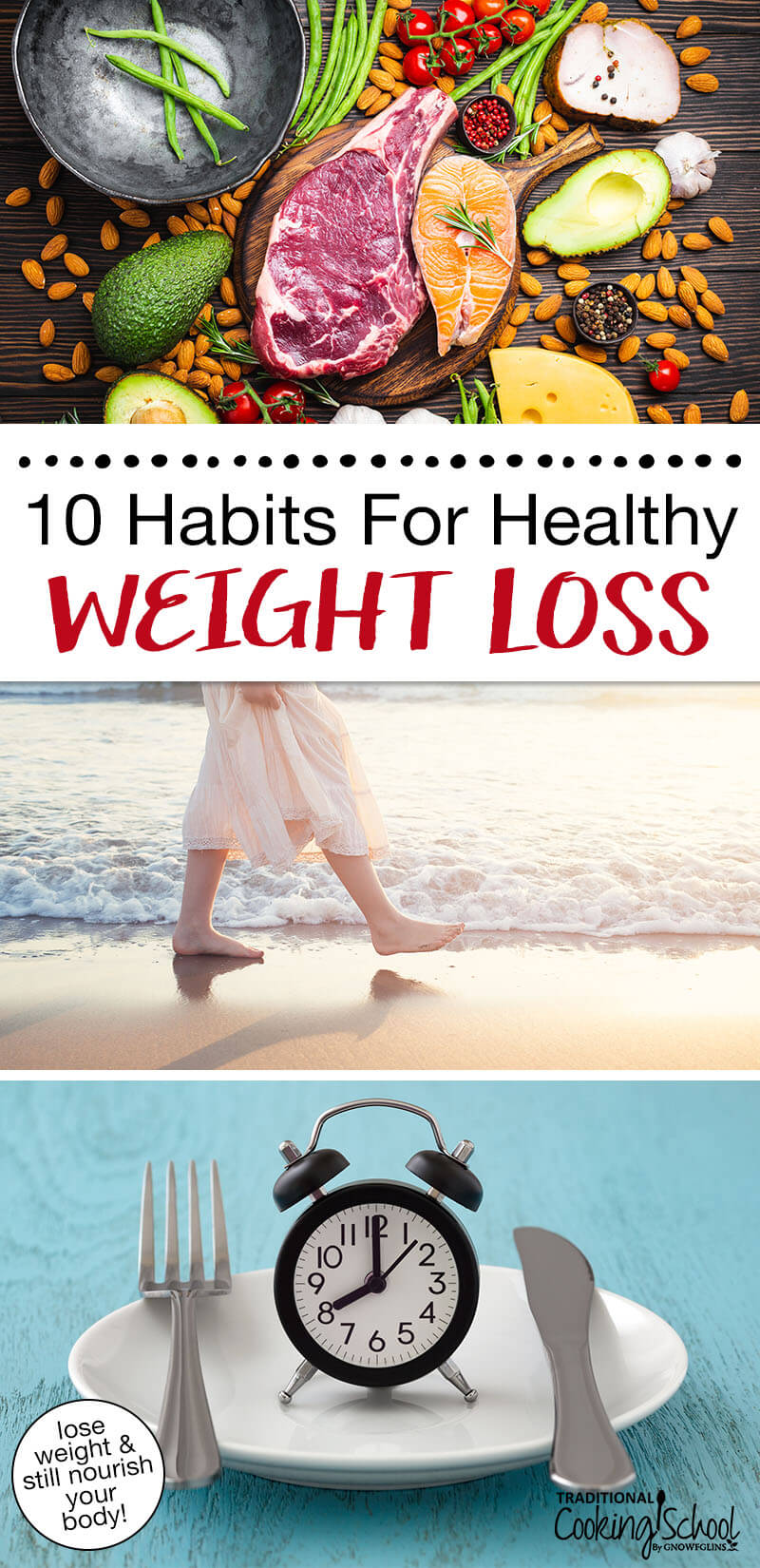
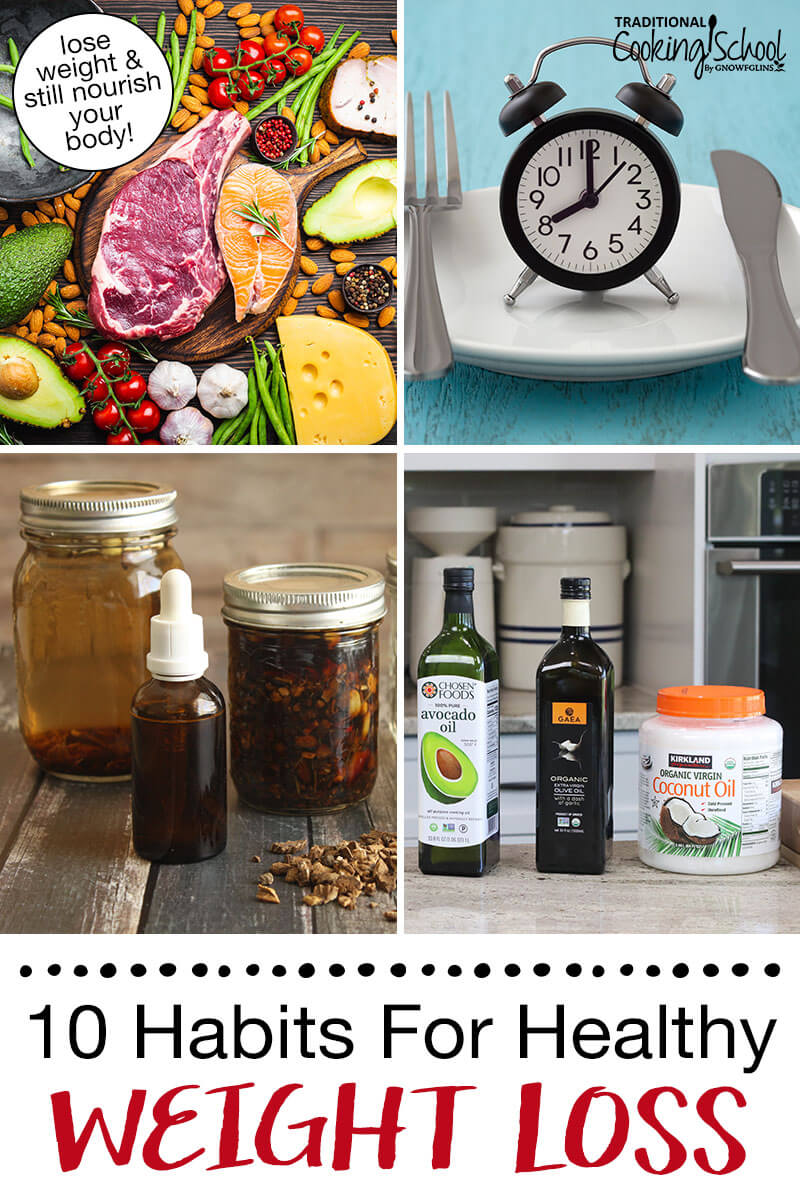
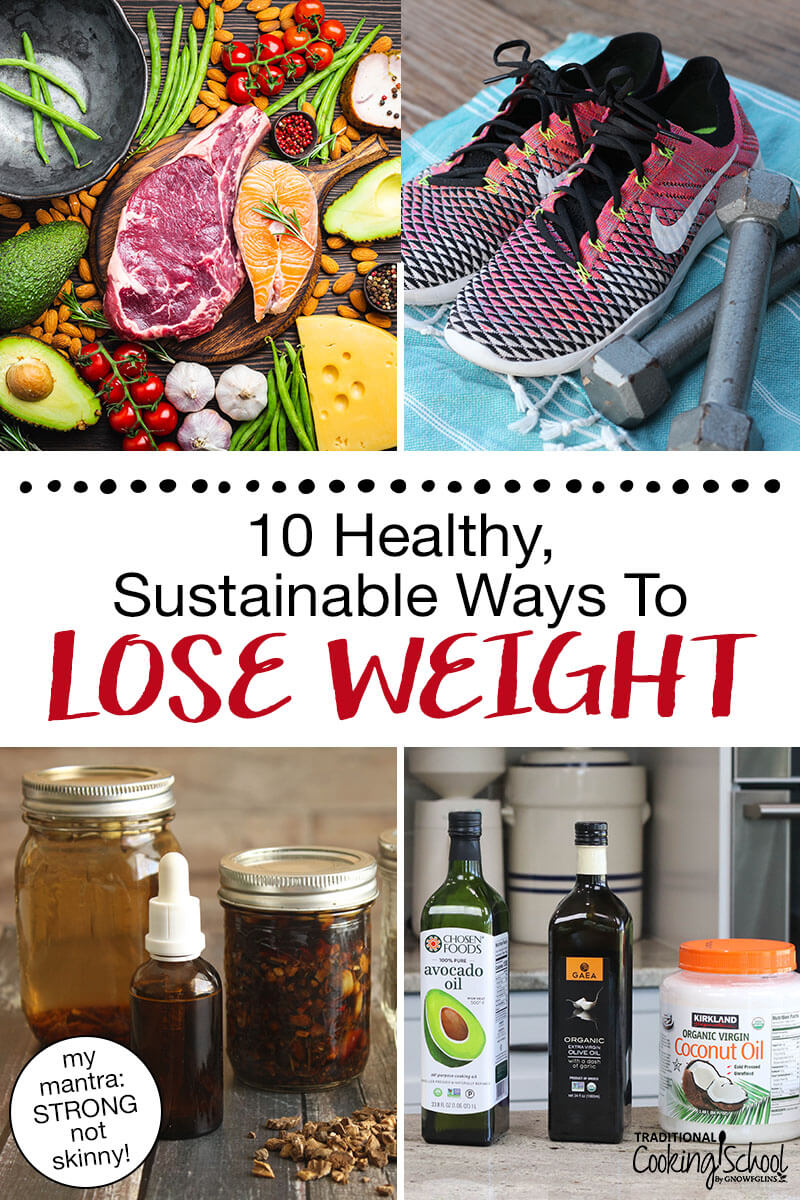
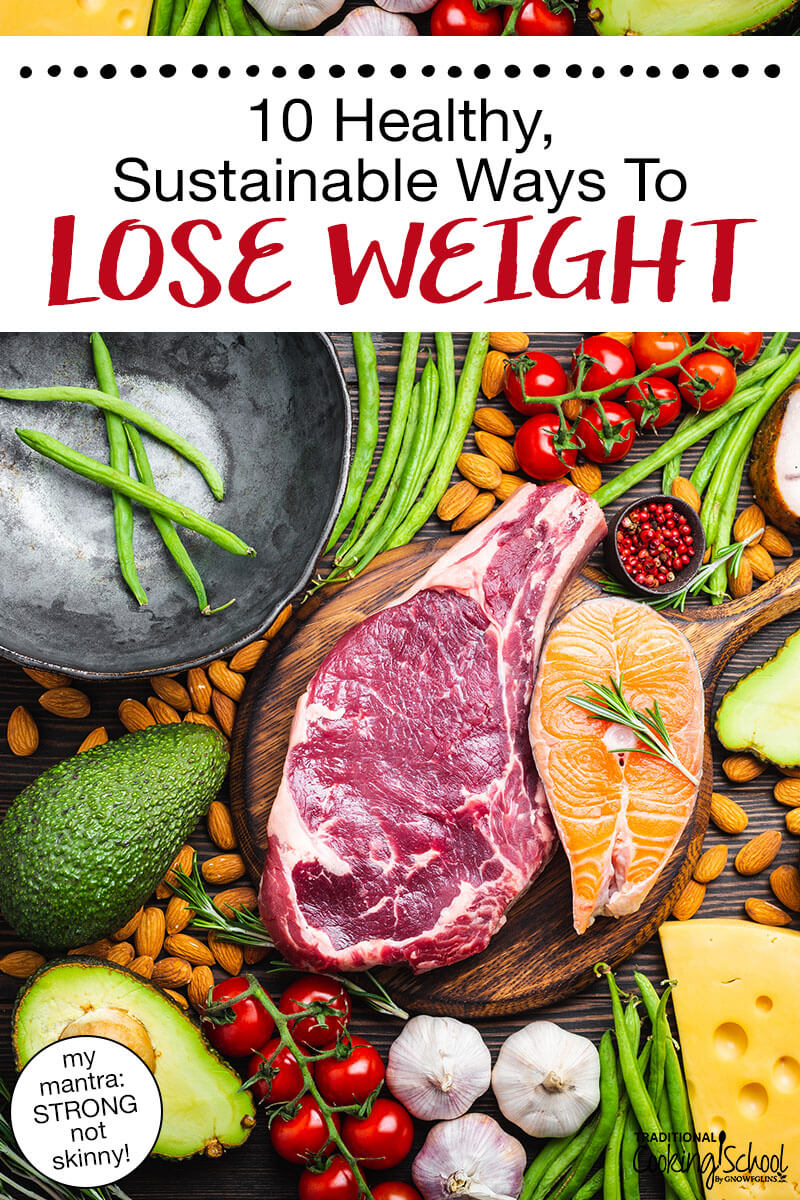
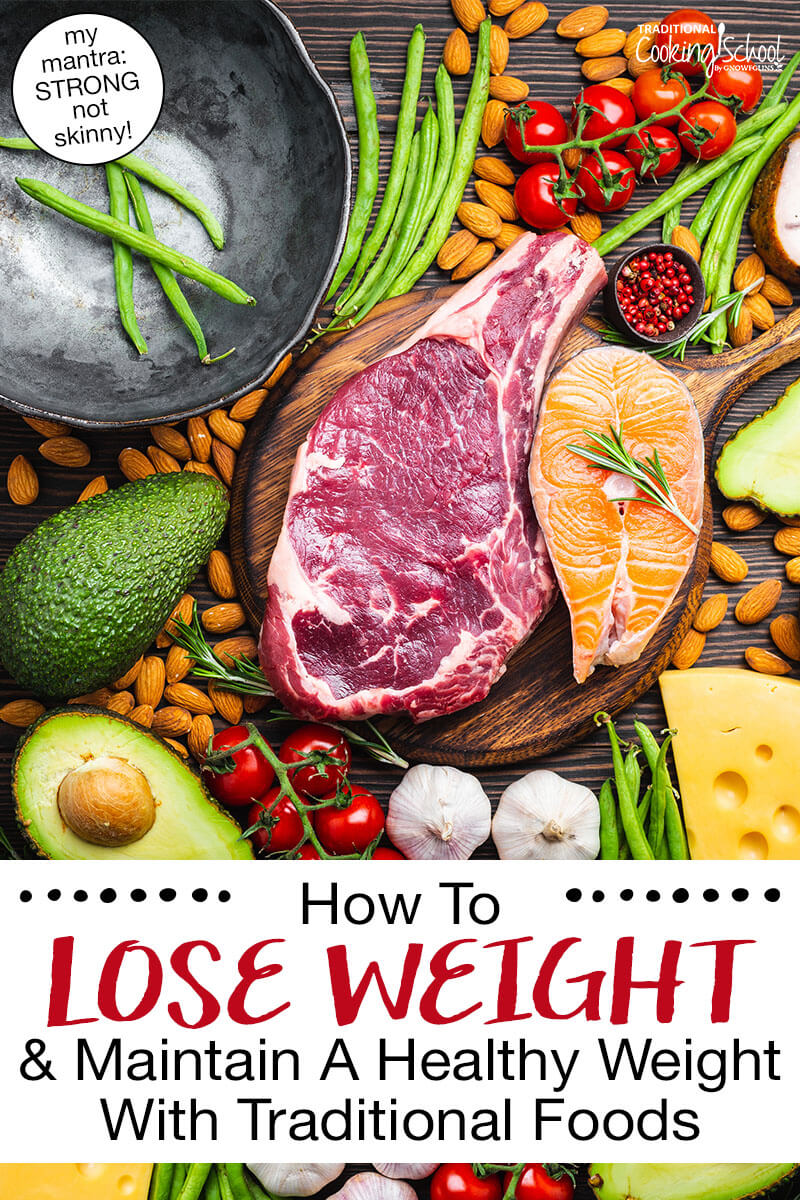
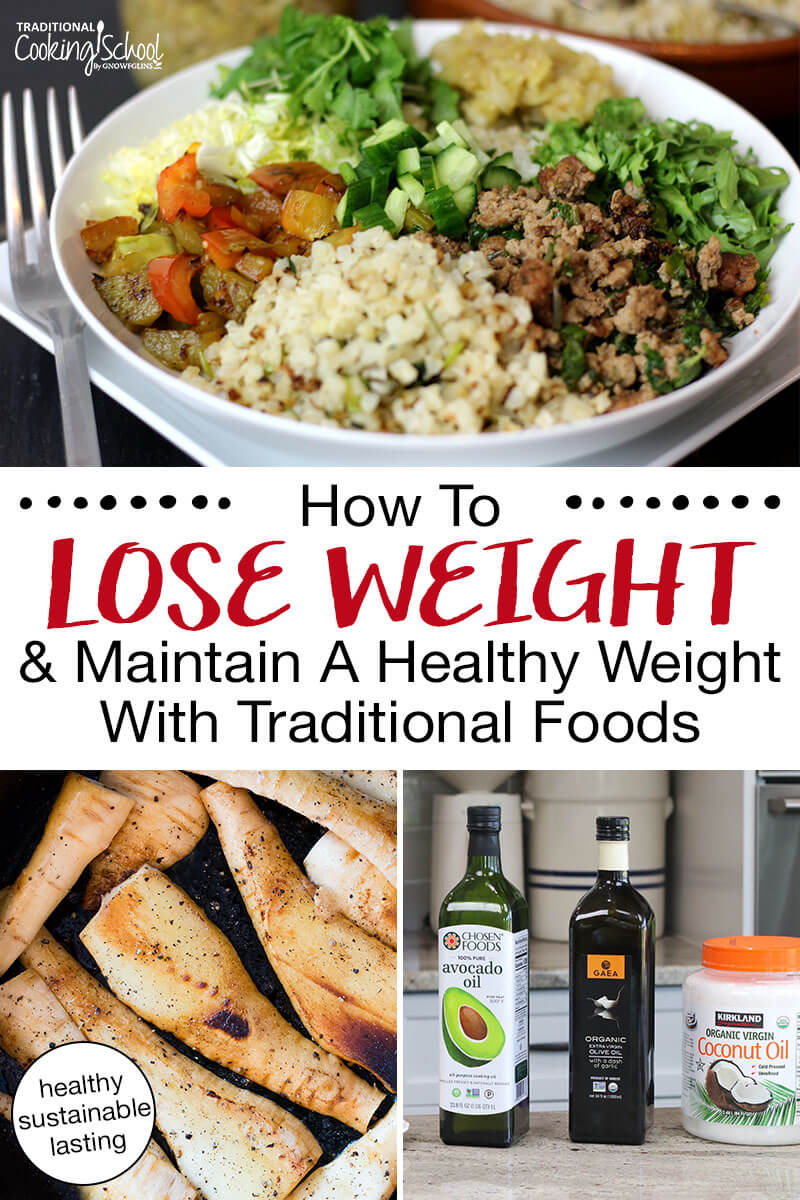
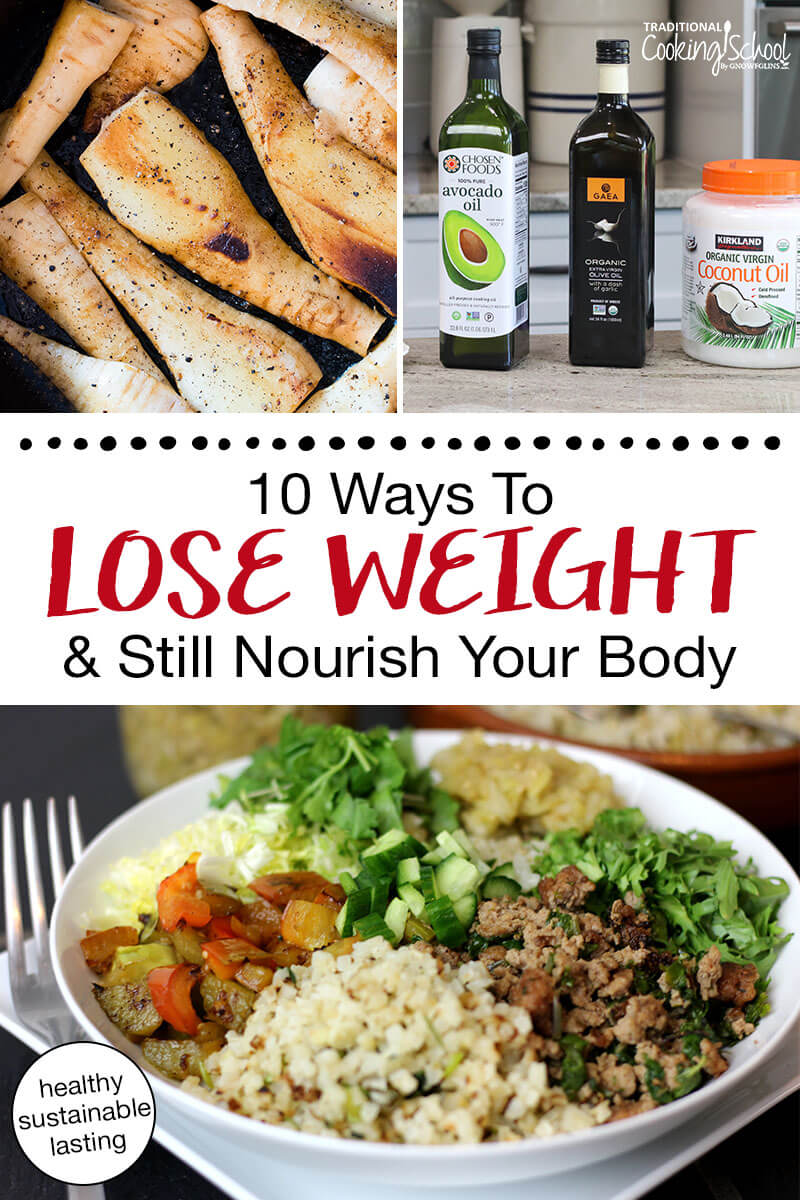
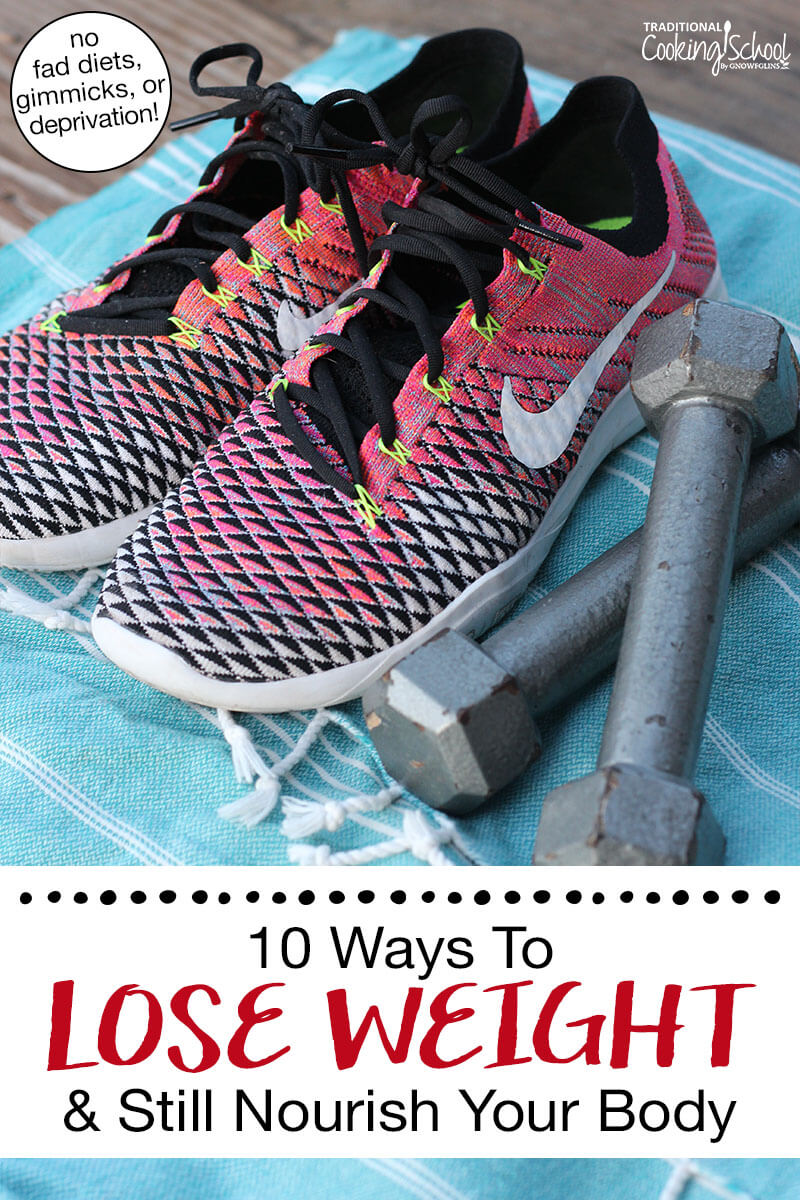
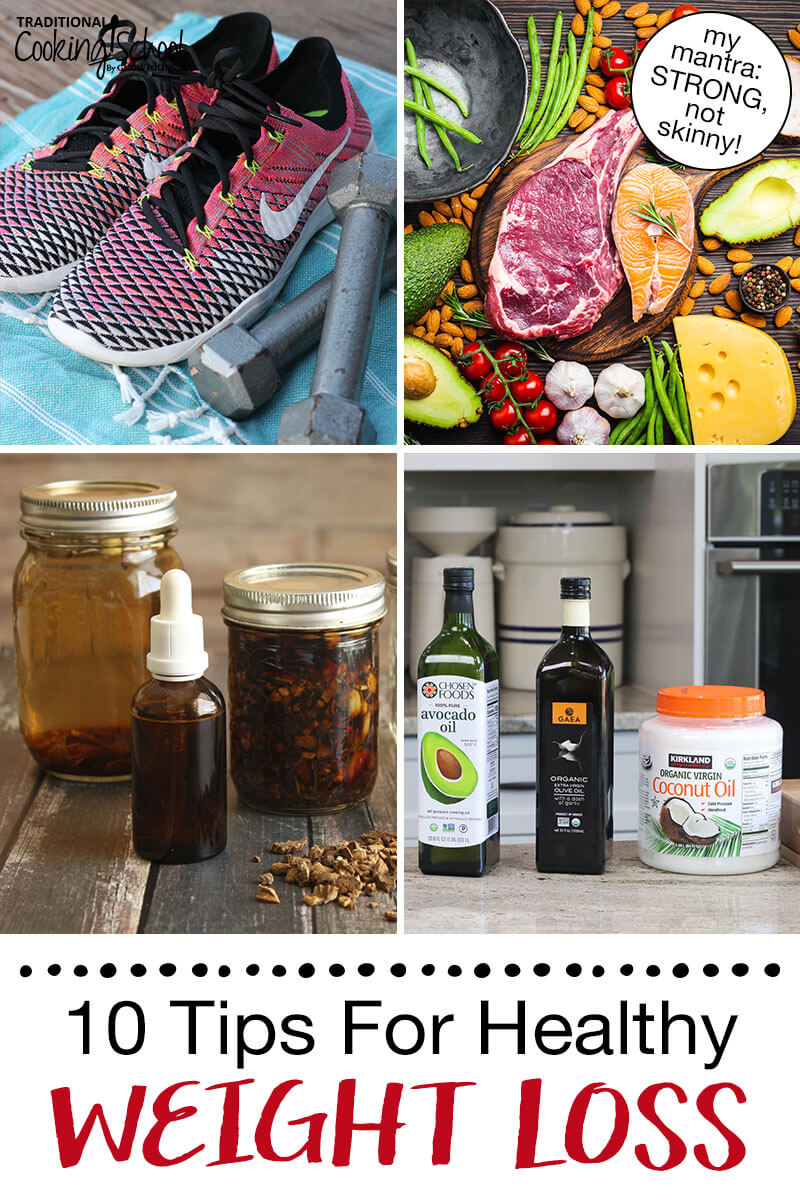

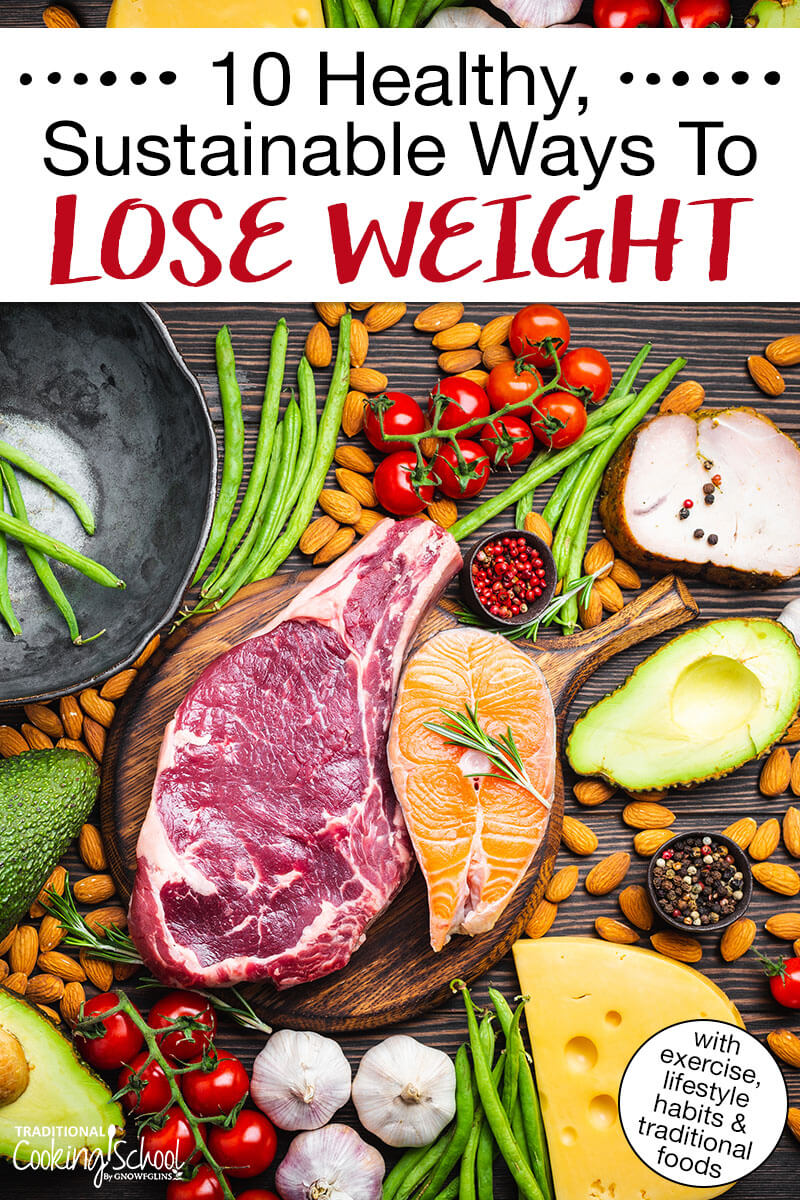
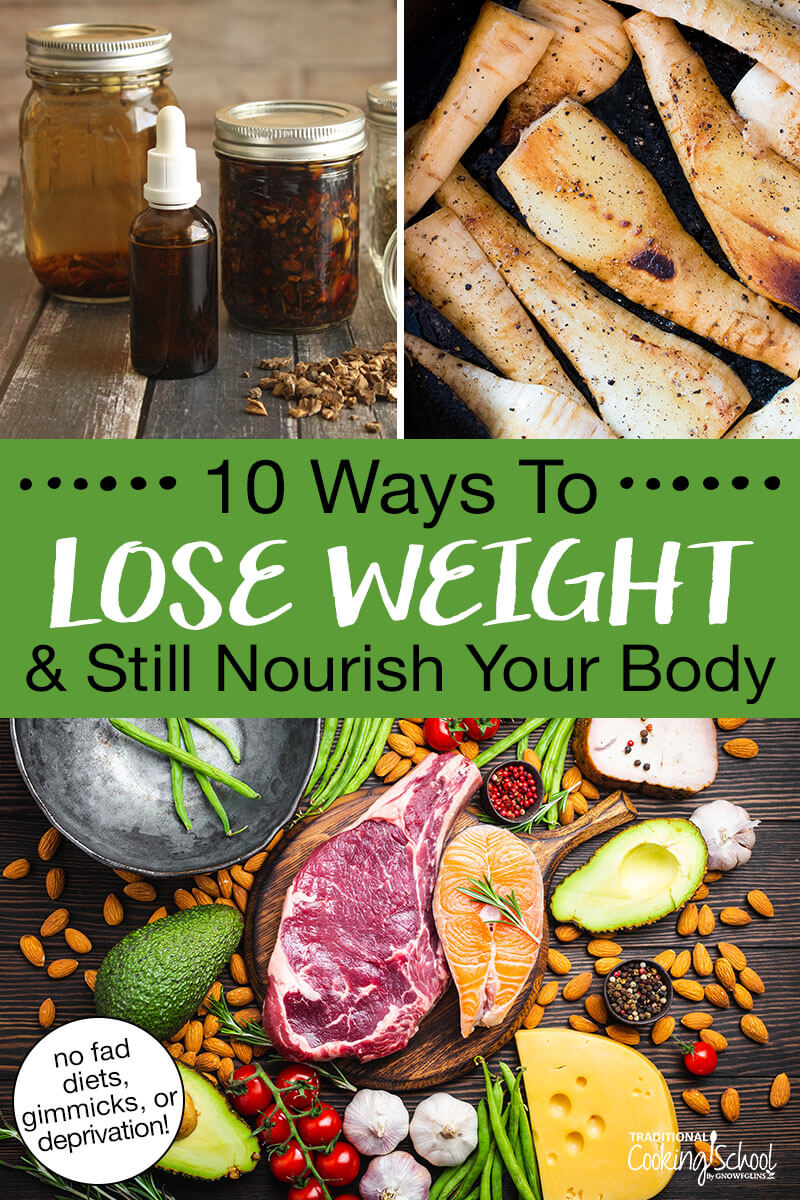
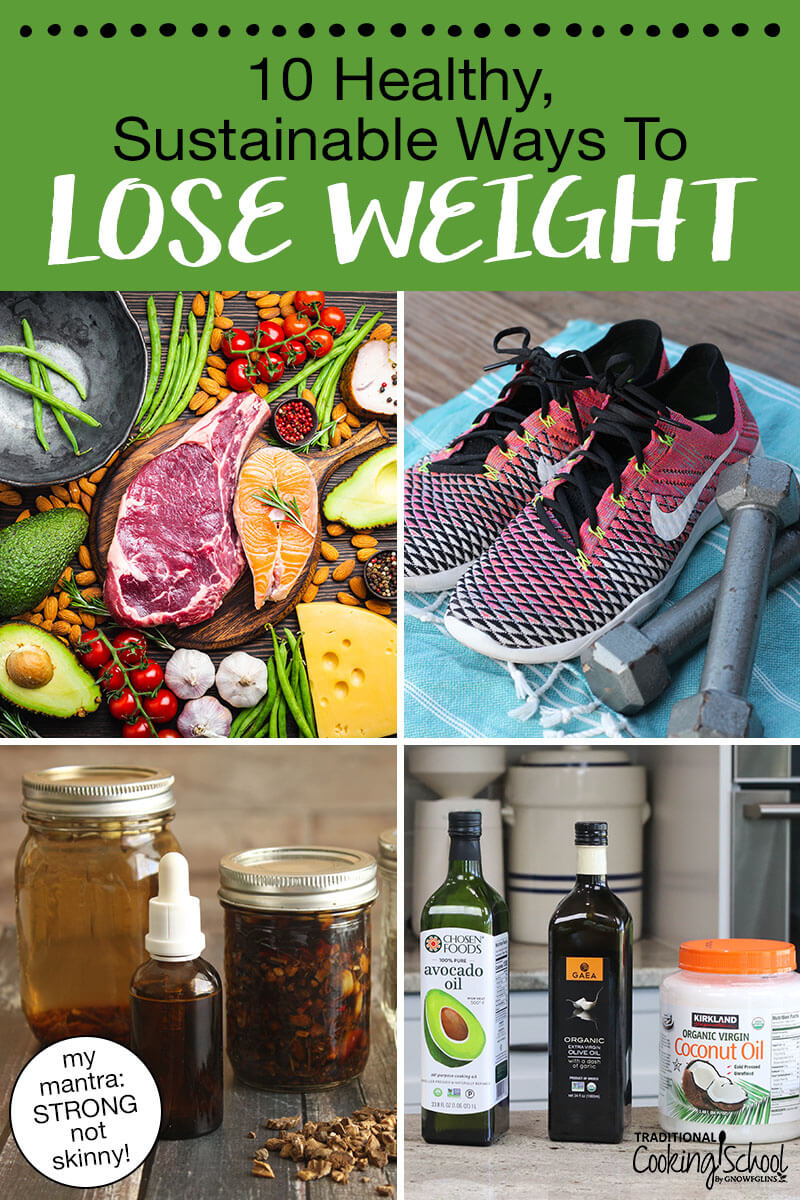
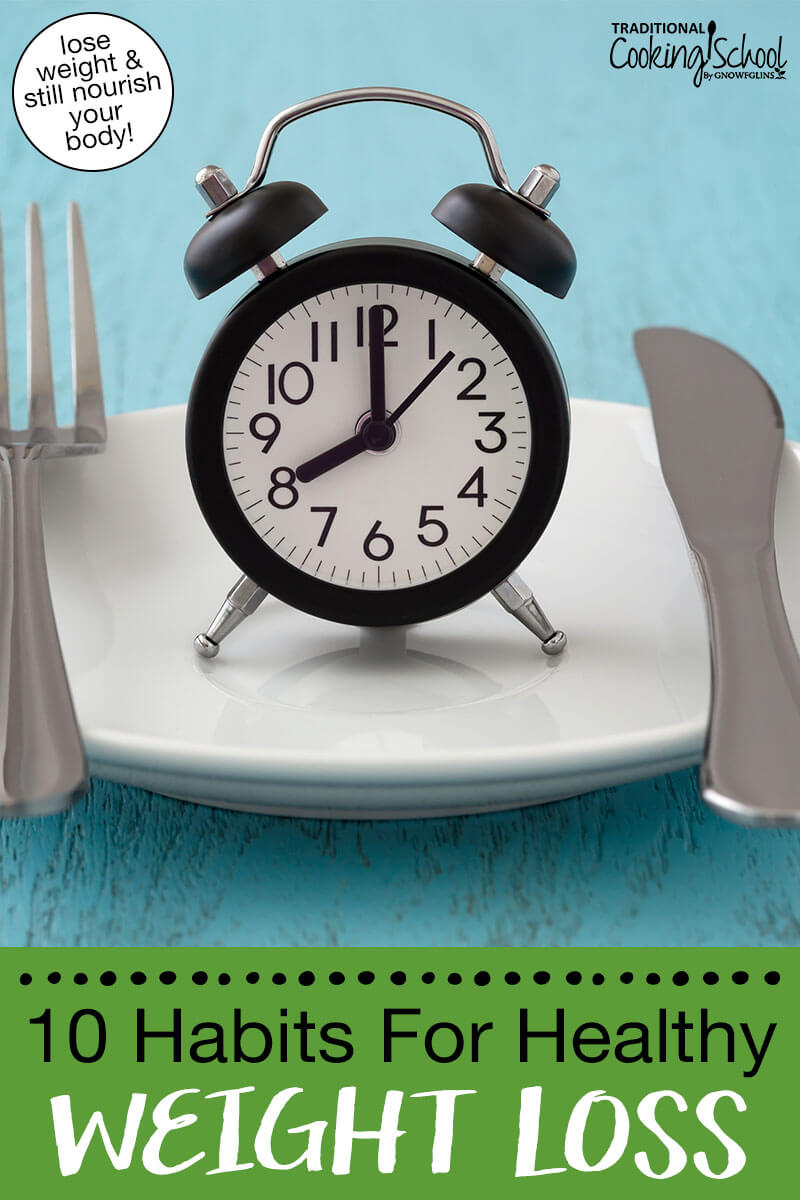
In #5 you discuss digestive bitters and the effect on the liver and gall bladder. What do you do, if you no longer have a gall bladder and your liver has been compromised by insulin resistance and NASH?
Hi Alisa, great question!! 🙂 I’m so glad you asked that, because those without a gall bladder still need digestive bitters, and it’s such a wonderful way to support your body. It still benefits the liver, helping with both digestion and detoxification. 🙂 So yes, one dropper-full with all meals that contain fat and/or protein is ideal for those without a gall bladder.
The Keto Helpful Chart implies that if you are active, you should eat glucose/fructose packaged snacks? You really are encouraging THAT over eating whole foods? Just wondering…
Hi Sandi, I believe you misunderstood the chart. The right column is categorized as various “examples” of carbs, and the chart says those products are “marketed to” athletes. So they are not my personal recommendation. Thanks for the question!
I’m doing the GAPs diet and although I dropped a stone initially, am now heavier than I was before I started after 2 years and was slightly overweight (by BMI) then. I know Dr. NCM says get off the scales but I am still concerned. We do not eat puddings – mainly meat/veg/ sour cream/butter with a litle fruit. My clothes still fit fine but…..will try the more movement!
Yes, wonderful Lilibette (such a lovely name by the way!), we can’t go wrong with more movement! We can, each of us, tailor it to our body’s strength and energy levels, increasing over time as we’re able.
Hi, thanks for the article, but I was wondering why you didnt include Trim Healthy Moma as an option? I thought you reccommended THM.
Hi Mindy, THM has been shared a lot here at TCS; but I am not one of the authors who has personally used the method. I’m so glad TCS has the best THM + real food recipes and guidance!! But this article is taught from the perspective of functional medical, Paleo and holistic practitioners, so a bit of a different approach, and the one I’ve used and researched personally. Thanks for the great question and clarification!
hello? I really don’t know what really to eat cause am a type 2 diabetic, hypertension 160/60 cannot be lower my blood presure an a thyroid. Very much difficult on which to eat cause diabetic and thyroid has a good and bad to eat. There’s food that good for diabetic and bad for thyroid. Please advice me on these. I need you to help me.. Thank you.